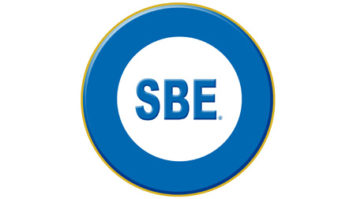Time was, all it took to provide a broadcast service was a transmitter and a receiver. While technically that’s still true, there’s a lot more to it nowadays.
Some recent failures point out just how difficult it is to put all the pieces in place, and how high the stakes are in attempting to do so.
Consider all the current hype over Mobile Multimedia services — often called simply “Mobile TV,” but for this newspaper’s audience in particular, it’s important to note that the services typically include radio services or other radio-styled, audio-only services, as well.
Given such buzz, you’d think that players who were early to market would do quite well. Unfortunately this is not the only parameter of success, as two pioneers of Mobile TV recently learned.
In the U.S., Crown Castle’s planned Modeo service has curtailed its efforts without ever fully launching, and is now moving to sell off the service’s spectrum assets (it had a national license for 1670–1675 MHz). Meanwhile, in the U.K., British Telecom’s Movio service, which launched there in October 2006 (with a Mobile TV subscription service over DAB), has announced it will cease operations early next year.
What happened to both services is an object lesson on how the world of wireless media-content delivery has changed, and it bears observation by broadcasters as they appraise their future prospects.
A moving target — literally
First, let’s step back a bit to clarify some basic assumptions and the motivations they engender.
Wireless broadband is seen as the obvious next step in the evolution of the connected citizen. As consumers have become accustomed to broadband connectivity in fixed locations, the services thereby obtained have become an increasingly common, expected and relied-upon part of their daily lives.
So it stands to reason that portable versions of the same will become quite popular. Thus the primary target of wireless broadband is the handheld consumer device.
The ideal makeup of this device is a complex calculation, and one that is also still evolving, of course, but it is without doubt a highly multifunctional device.
Clearly, voice and simple data communication (such as Instant Messaging) will be primary functions, but the “pocket convergence” of other functionalities makes these devices even more appealing. This includes push e-mail, Internet browsing and search, contacts and calendar synchronization, lightweight productivity applications, games, camera and/or photo display, media storage/playback (music and videos/TV shows/movies) and — the apparent Holy Grail du jour — live or on-demand access to rich media content.
There are two schools of thought on how to provide the latter.
One approach employs the broadband cellular network that is used for all other connectivity, but this can provide a less than optimal user experience due to congestion on these networks, especially given the requirement for a fairly constant and relatively wide bandwidth to play a real-time audio/video signal. (And when a large number of users all want to watch the same signal at once, this becomes a much more serious problem.)
So an alternate approach has emerged, in which the A/V signals are delivered to the device via a digital broadcast transmitter. In this case the handheld device is a multi-purpose receiver that includes a cellular phone transceiver, plus a digital broadcast receiver.
Mobile multimedia services are acquired, discovered, navigated, authenticated and if necessary, ordered (for on-demand services) via the “phone side” of the device, but the media content itself is delivered to the device via its digital broadcast “receiver side.”
This method keeps the high-bandwidth traffic off of the cellular network, and allows an unlimited number of simultaneous users to receive the same content without clogging the network.
It takes a corporate village
The path between media content creation and delivery to consumers has become much more crowded in the digital world, particularly where wireless distribution is involved.
Yes, wired broadband is still a growth business, but most players have already planted their stakes in that arena, and the ongoing Net Neutrality debate notwithstanding, it is a fairly open, stable and regulated marketplace, with only incremental growth foreseen.
Wireless multimedia, on the other hand, remains the Wild West, with lots of open space on the horizon, no dominant players as yet, and regulations still to be drawn. Thus it looks to be the next telecom gold rush, so many players are flocking to become engaged.
There are also more players involved due to the sheer number of segments in the chain. As the digital media business has evolved, different players have concentrated (either by choice or by rule) on an increasingly specialized piece of the overall distribution channel.
This is quite different from the traditional world of wireless delivery, where there were really only two businesses involved: 1) broadcasters, who created, distributed and delivered content through the air to consumers, and 2) manufacturers, who built receivers that consumers simply bought, turned on and tuned to broadcast channels to receive content.
Today the chain includes content providers, their hosting services, distribution networks (the Internet backbone), last-mile connectivity (wireless service providers) and compatible devices.
And that’s not the end of the complexity: In the United States, the device design typically is controlled by the wireless service provider, so consumers’ choice of receiver and features is constrained by their network. This means the long and growing list of styles and features included on these devices are not always available to every consumer at all times, or at the price point they’d prefer.
Importantly, this control of features typically includes the non-inclusion of an FM radio receiver on most U.S. handsets — even though in many cases the required circuitry may actually be loaded on the device, but wireless network operators simply choose not to enable it.
Some have argued that this becomes a matter of public safety, because during disasters the cell network may be temporarily inaccessible due to overload, but the radio could be providing a user with valuable or even life-saving information throughout.
Note also that this differs significantly from the non-U.S. experience, where all devices generally run on all networks. There, consumers typically buy their devices first, based on the features they want (often including FM radio, by the way), then they shop for a service plan from a provider, knowing that the device is certain to work as expected when they connect.
Thus the U.S. consumer’s experience is the result of an intricate dance with content providers, service providers (sometimes several) and device manufacturers. Even among the device manufacturers, a little ballet of their own may take place between OEMs (original equipment manufacturers) and what are called ODMs (original device manufacturers) — lesser-known subcontractors who actual fabricate the devices for the brand-name companies whose logos are on the shell.
The process of device design has itself become a complex matrix that starts with choices of spectrum and radios (most devices now include multiband transceivers covering WiFi, Bluetooth, CDMA or GSM for voice, GPRS or EDGE for 2.5G data, HSDPA or EV-DO RevA for 3G broadband service, etc., with future devices also likely including some sort of digital multimedia broadcast receiver), then moves to decisions on processor chips, operating system and other included software, user interface (buttons, touchscreen and/or QWERTY), screen size/aspect ratio/resolution, physical interfaces/connectors, and battery life/size.
Actual implementation flows from the specs (and delivery schedule) set by the net operators to the OEMs to the ODMs and back. Along the way substitutions or compromises may need to be made, sometimes resulting in a non-optimal product, but one which the net op is already committed to deploy.
All this just reflects some of the technical complexity of digital wireless delivery, but there is a similarly byzantine business architecture involved, as well.
We’ll consider the latter next time, with a closer look at the two recent failures mentioned earlier, and some rules of the road for broadcasters if they want to be successful players in this complicated space.







